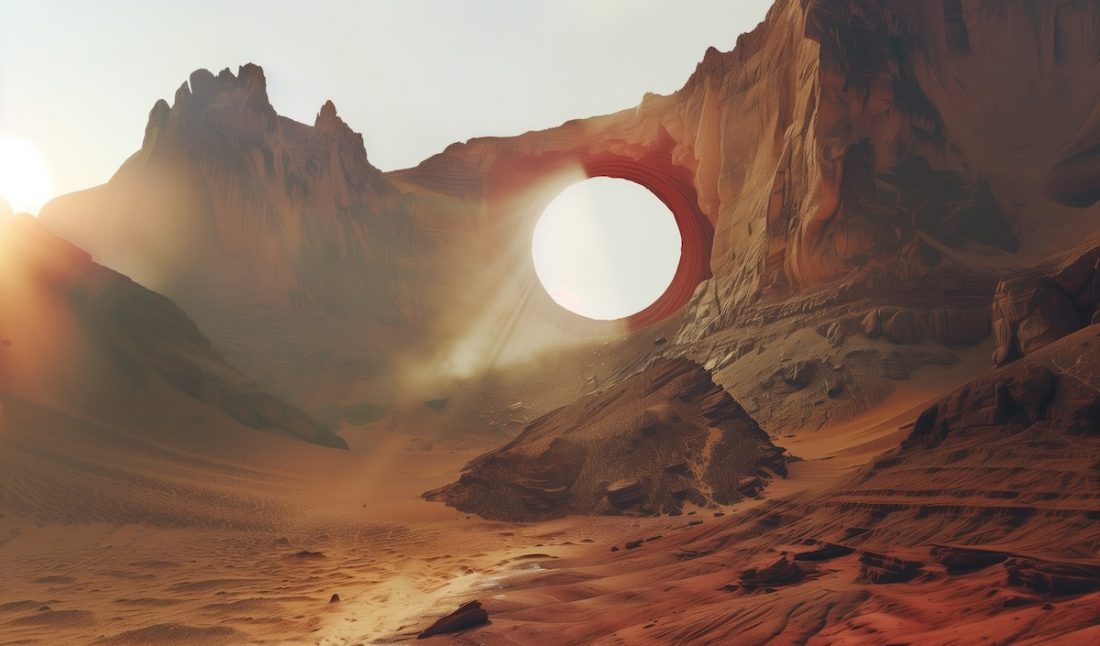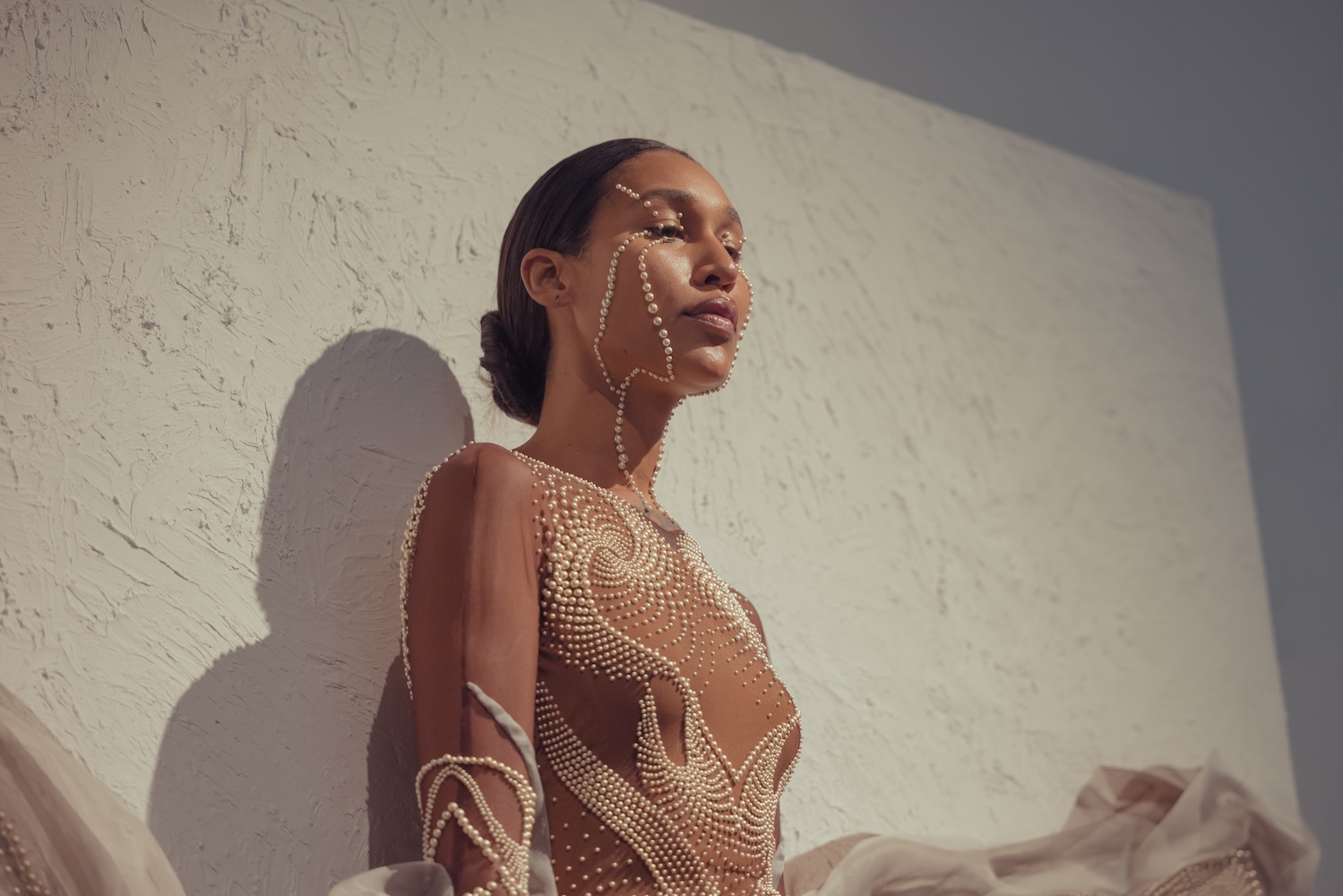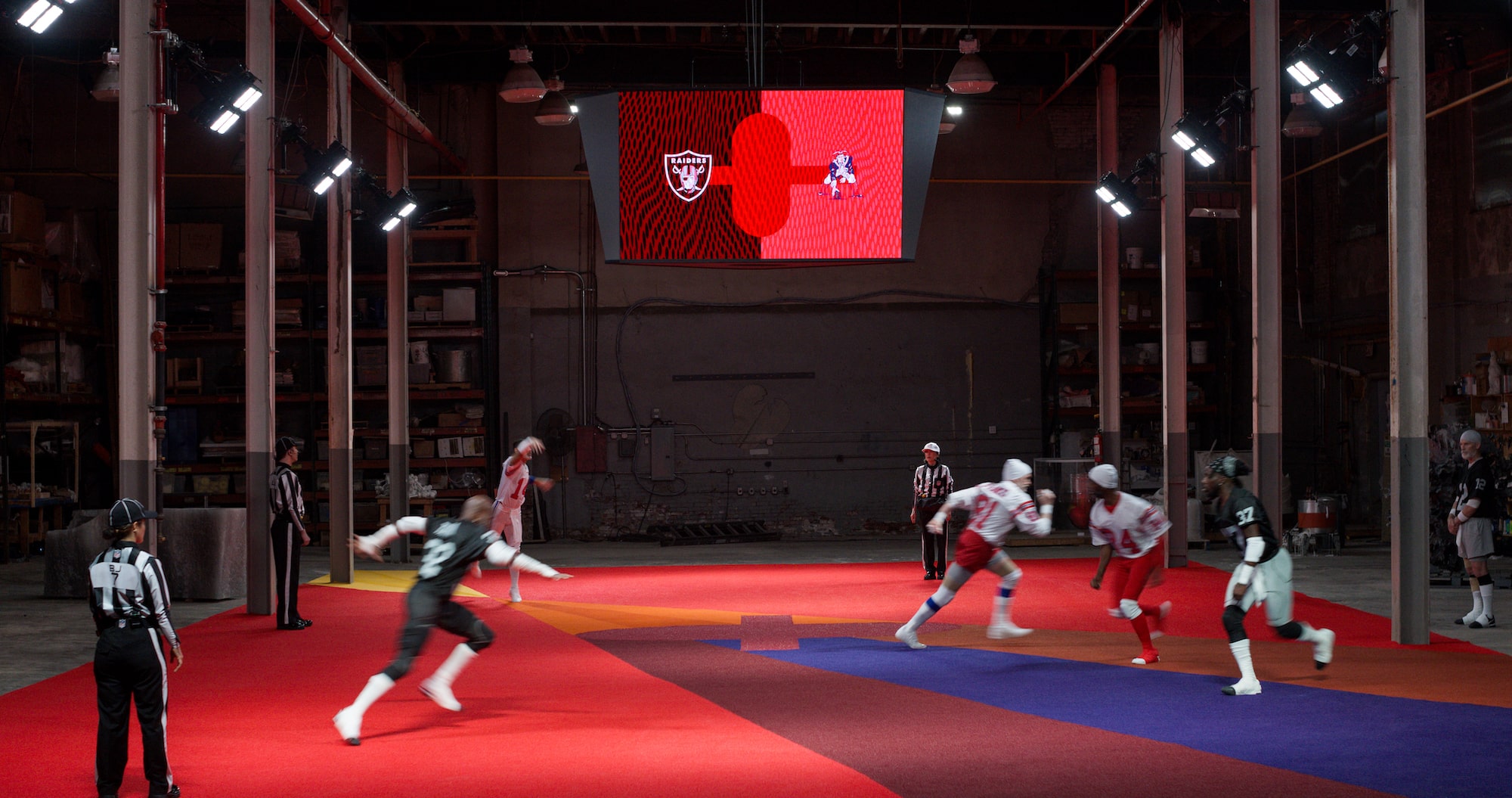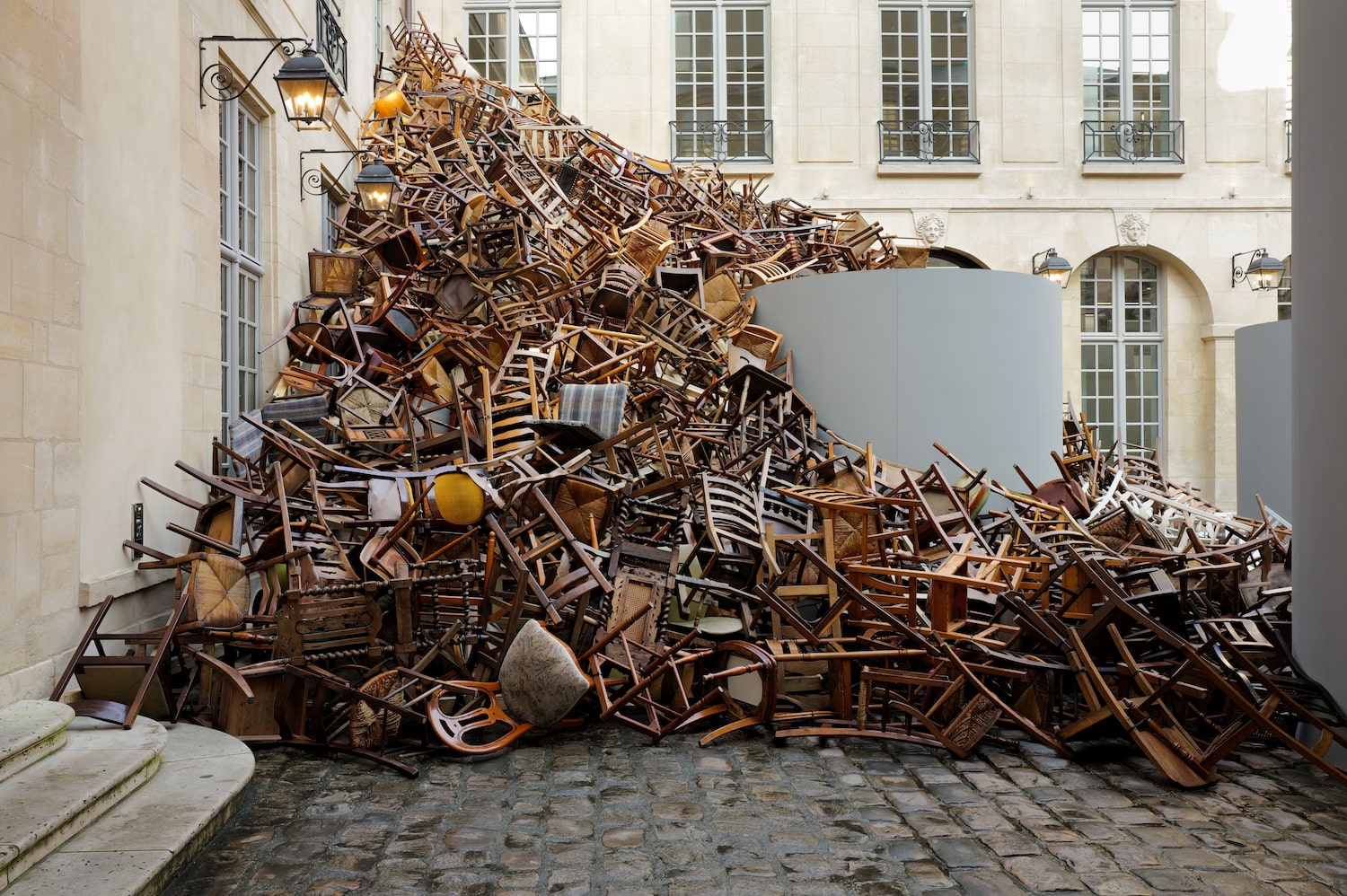Last week during Art Basel Paris, the visionary, inaugural presentation in France of AlUla’s Artists in Residency Program was unveiled at 5 rue Saint-Merri. On view from October 15-20, the euphoric exhibition curated by Arnaud Morand, Head of Arts & Innovation at the French Agency for AlUla Development (AFALULA), united 43 enveloping artworks by 20 skillful artists. Titled “Orbius Tertius,” invoking the perceptive literature and ideologies of Jorge Luis Borges, the spirited show touched expressively on the blurred lines flowing in between fantasy and reality in the realm of mesmeric, visual storytelling.
The multifaceted show connected the soaring artistry of diverse creatives Maitha Abdalla, Mohammad Alfaraj, Monira Al Qadiri, Daniah Alsaleh, Marlon de Azambuja, Grégory Chatonsky, Salomé Chatriot, Sara Favriau, Talin Hazbar, M’hammed Kilito, Sabine Mirlesse, Leo Orta, Louis-Cyprien Rials, Anhar Salem, Hugo Servanin, Sofiane Si Merabet, Aicha Snoussi, Ittah Yoda, and Ayman Zedani. Each artist—whether exploring painting, installation, sculpture, video, or photography—engaged in a deep conversation with the beloved, ancient land of AlUla still humming with myth, magic, and momentum.
Nora Aldabal, Executive Director of Arts and Creatives Industries at the Royal Commission for AlUla, and Phillip Jones, Chief Tourism Officer, generously took the time to speak with Whitewall about the joy of debuting the exhibition at Art Basel Paris, connecting artists to the extraordinary landscape of AlUla, and the major milestones on the horizon for the art and cultural mecca.
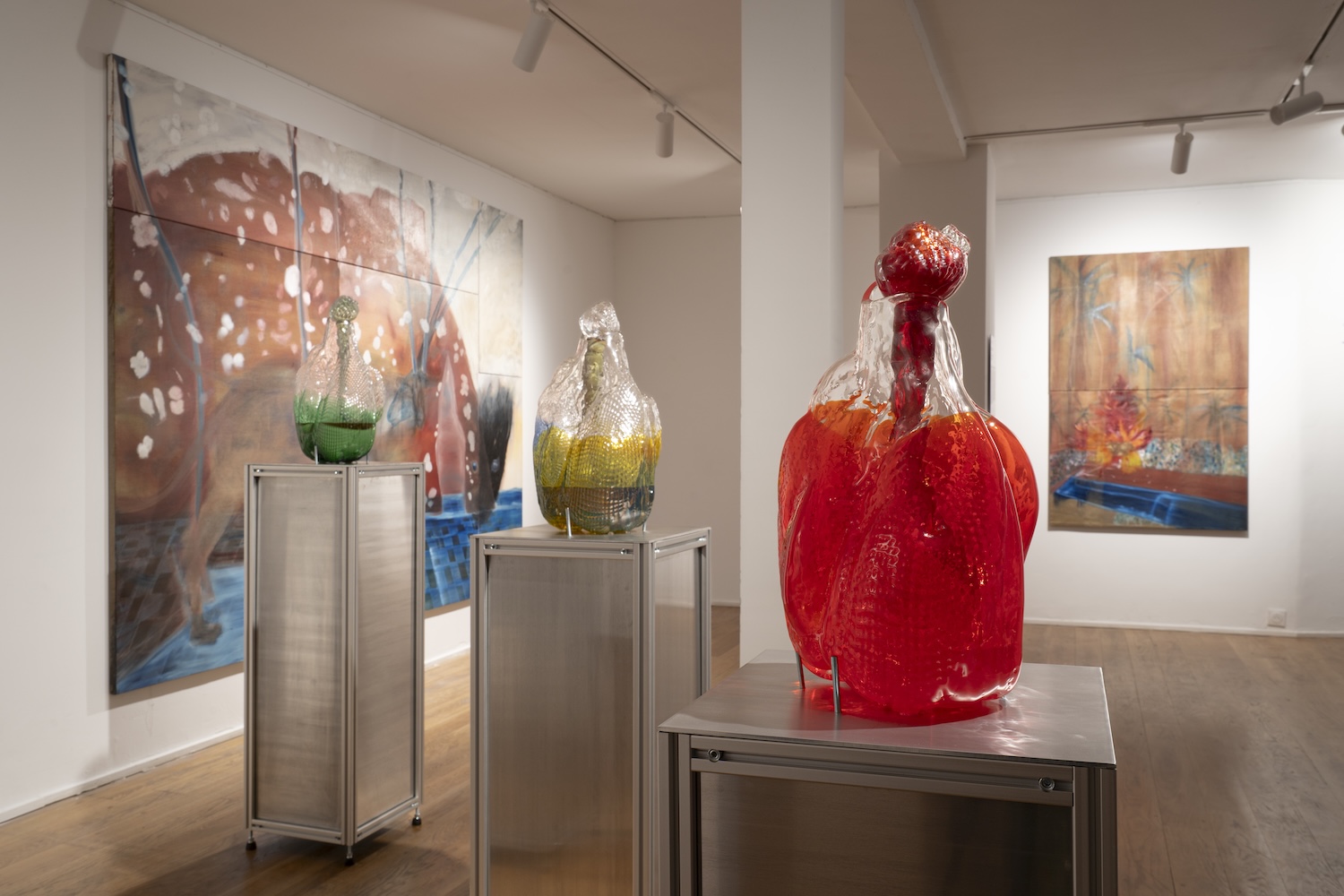 Installation view of “Orbis Tertius” Exhibition at Art Basel Paris, courtesy of AlUla’s Artists in Residency Program.
Installation view of “Orbis Tertius” Exhibition at Art Basel Paris, courtesy of AlUla’s Artists in Residency Program.
WHITEWALL: In what way was it important for you to showcase the 1st exhibition of AlUla artists-in-residency program during Art Basel Paris week?
NORA ALDABAL: The debut of the AlUla Artist Residency Program at Art Basel Paris was a significant milestone for us, as it allowed us to share authentic regional and global artistic voices with a vast new audience. It was also an opportunity to amplify the creative dialogue between AlUla and the global art world, fostering cross-cultural exchange.
This exhibition embodied AlUla’s forward-looking vision, placing contemporary creation at its heart and serving as a platform for cultural collaboration and innovative thinking. Art Basel Paris was the perfect stage to highlight the profound impact of the Residency on AlUla’s artistic community, encouraging greater understanding and appreciation of its dynamic cultural scene.
“Art Basel Paris was the perfect stage to highlight the profound impact of the Residency on AlUla’s artistic community,”
Nora Aldabal
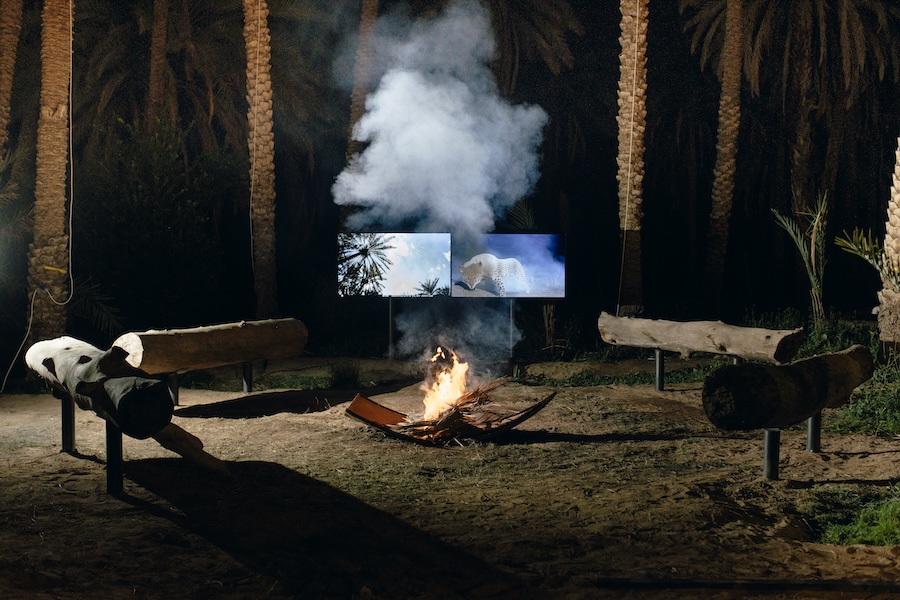 Joel Spring, “CLEANED,” 2024, © Lorenzo Arrigoni, courtesy of the artist.
Joel Spring, “CLEANED,” 2024, © Lorenzo Arrigoni, courtesy of the artist.
20 Artists Engage in Meaningful Dialogue with AlUla
WW: The exhibition Orbis Tertius features works by 20 artists who participated in AlUla’s residency programs. How do their pieces resonate with their experiences during these residencies?
NA: The 43 diverse works presented in Orbis Tertius are deeply intertwined with the artists’ experiences during their residencies in AlUla. They have gathered facts and anecdotes, and documented their observations across diverse fields—such as botany, geology, astronomy, crafts, architecture, agriculture, and sociology—unraveling the tangible world and reimagining it through a speculative lens.
Each piece is a manifestation of the unique connection the artists developed with AlUla’s extraordinary landscape, rich heritage, and local community. These artists were challenged to engage in meaningful dialogue with AlUla, which allowed them to experiment with their craft and push the boundaries of their creative practice.
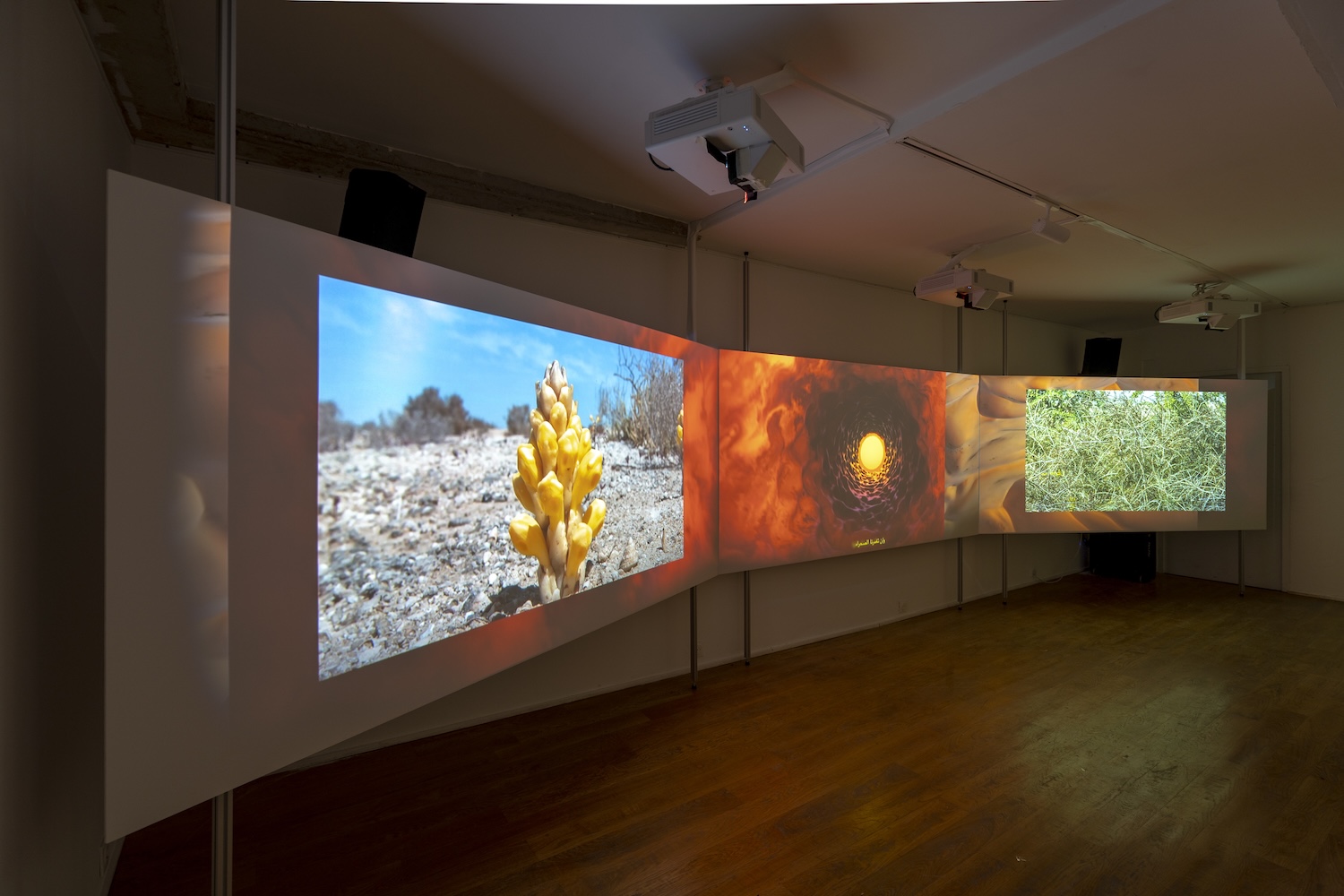 Installation view of “Orbis Tertius” Exhibition at Art Basel Paris, courtesy of AlUla’s Artists in Residency Program.
Installation view of “Orbis Tertius” Exhibition at Art Basel Paris, courtesy of AlUla’s Artists in Residency Program.
Empowering Local Artisans, Designers, and Residents
WW: In what ways do the artists and the residency programs engage with and impact the local community?
NA: The AlUla Artist Residency Program invites artists and designers to engage deeply with AlUla’s people and their culture, using it as a foundation for creative innovation. This interaction fosters deep exchange with local practices and indigenous creativity, which enriches both the artists and the community, creating new perspectives on heritage and art.
At the core of AlUla’s artistic vision is Madrasat Addeera, located in the AlJadidah Arts District, which serves as a creative hub dedicated to reviving ancient crafts, fostering a deeper appreciation for the region’s heritage, and providing valuable opportunities for locals.
By integrating the community into the artistic process, AlUla empowers local artisans, designers, and residents to actively participate in the city’s growing cultural landscape.
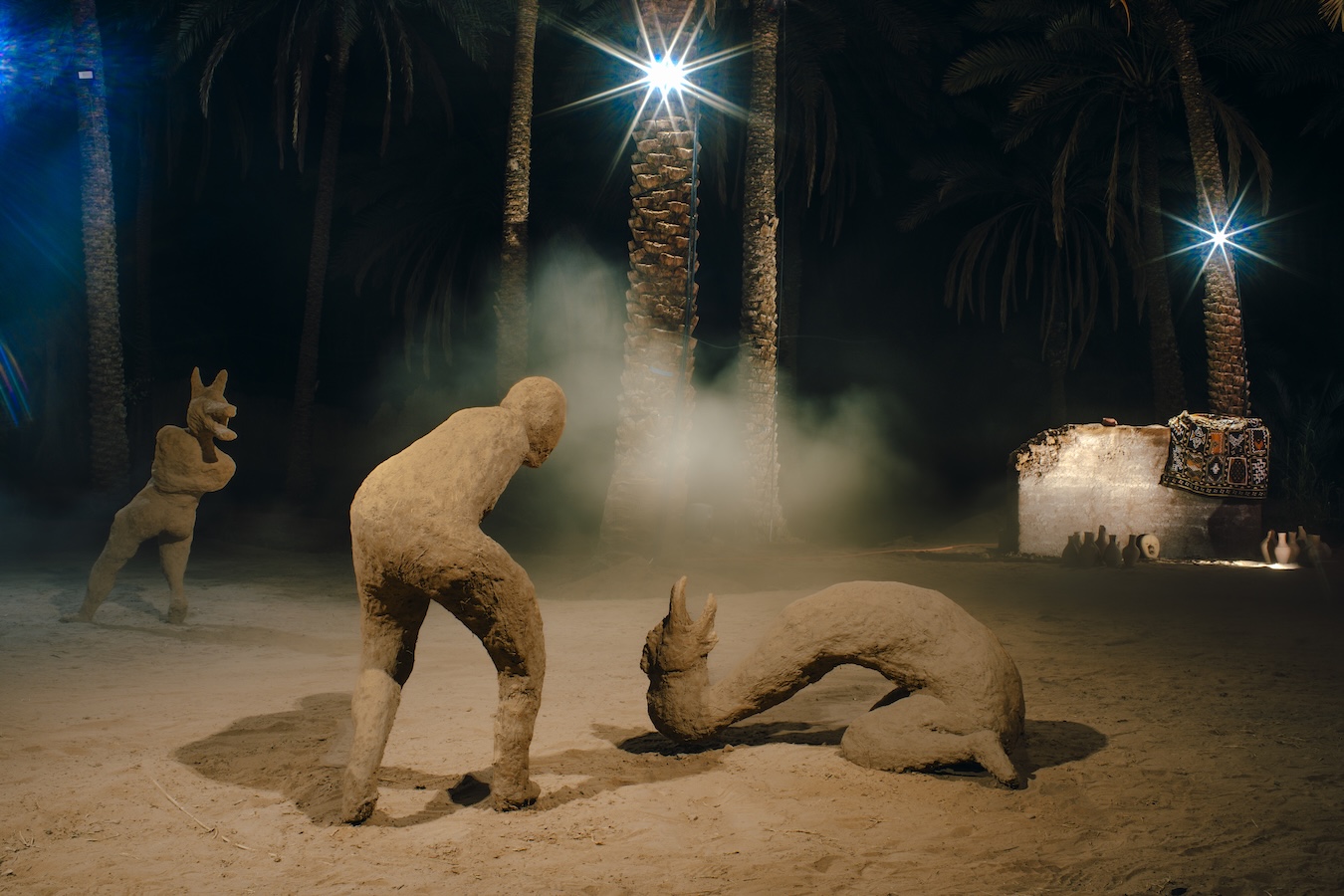 Maitha Abdalla, “If … To Be Born,” 2024, © Lorenzo Arrigoni, courtesy of the artist.
Maitha Abdalla, “If … To Be Born,” 2024, © Lorenzo Arrigoni, courtesy of the artist.
Art as a Bridge for Connecting AlUla’s Story to the World
WW: How do you connect the whole AlUla project with art, culture, science, architecture, agriculture, etc.? What is the importance of arts in AlUla’s global project?
PHILLIP JONES: In AlUla, we have championed the creation of a diverse destination, seamlessly integrating arts and culture, heritage, nature conservation, adventure, and more to create a truly unique proposition.
AlUla’s rich history and epic natural wonders provide the perfect backdrop for these various elements to intersect and enrich each other. From the ancient Nabataean architecture at Hegra to contemporary art exhibitions and initiatives like the AlUla Artist Residency program, every element of AlUla is designed to celebrate and amplify its cultural heritage while fostering innovation and creativity.
Arts play a pivotal role in our strategy, because it acts as a bridge, connecting AlUla’s creative past with its future, and linking global artists and cultural movements with each other.
By engaging with arts and culture, we are able to tell AlUla’s story to the world in ways that resonate emotionally and intellectually with visitors.
“AlUla’s rich history and epic natural wonders provide the perfect backdrop for these various elements to intersect and enrich each other,”
Phillip Jones
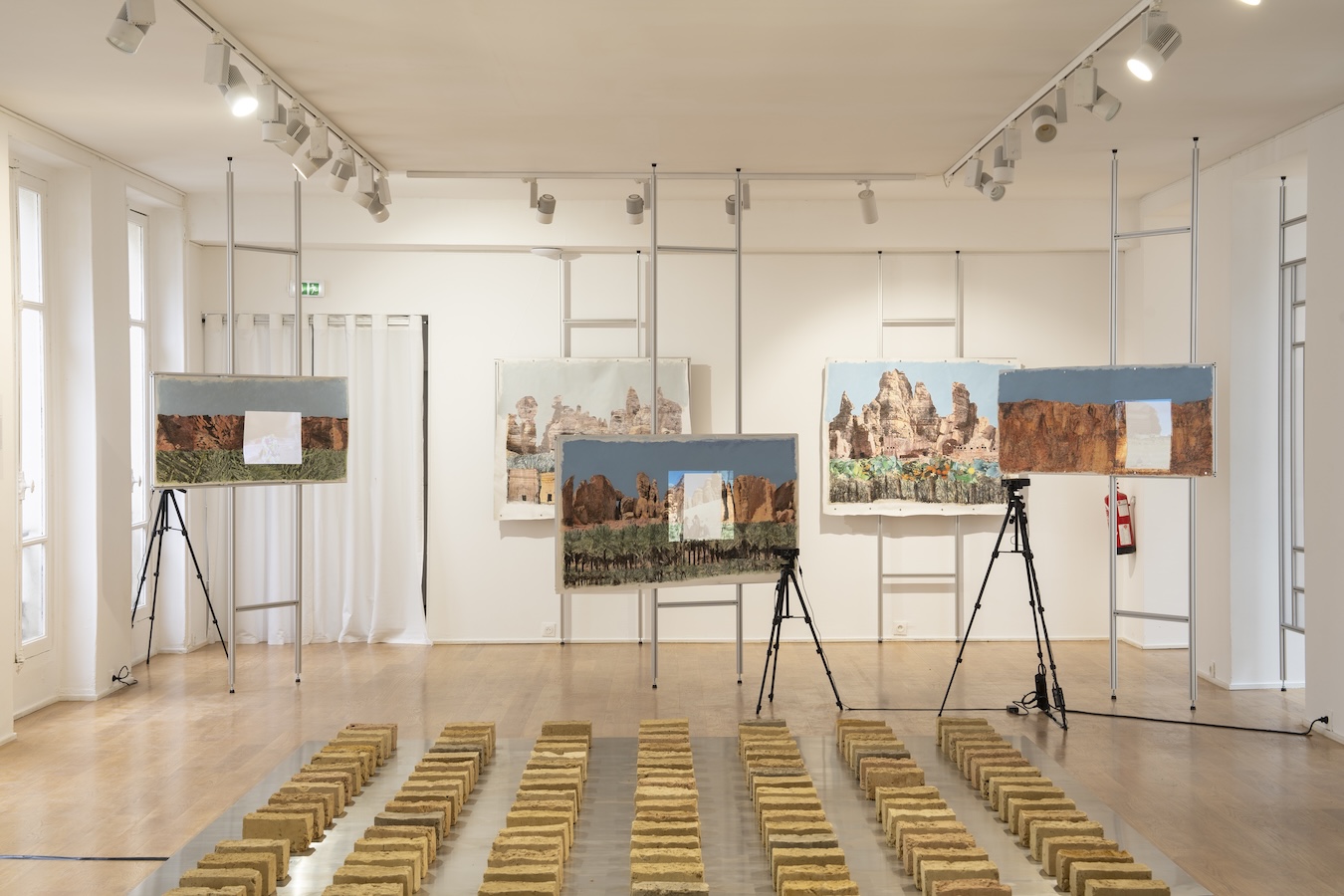 Installation view of “Orbis Tertius” Exhibition at Art Basel Paris, courtesy of AlUla’s Artists in Residency Program.
Installation view of “Orbis Tertius” Exhibition at Art Basel Paris, courtesy of AlUla’s Artists in Residency Program.
Visitors to AlUla Become Part of a Dynamic Cultural Narrative
WW: How do arts and culture shape the experience of visitors at AlUla?
PJ: Arts and culture are at the very heart of the AlUla experience. They bring AlUla’s rich history to life and provide visitors with immersive and transformative experiences. Visitors to AlUla are able to become part of a dynamic cultural narrative, which allows them to create life-long memories of our destination.
Whether it’s engaging with site-specific art installations in the desert, exploring ancient heritage sites like Jabal Ikmah, known for its hundreds of ancient petroglyphs, or attending performances in uniquely designed venues, art and culture permeate every aspect of the visitor journey.
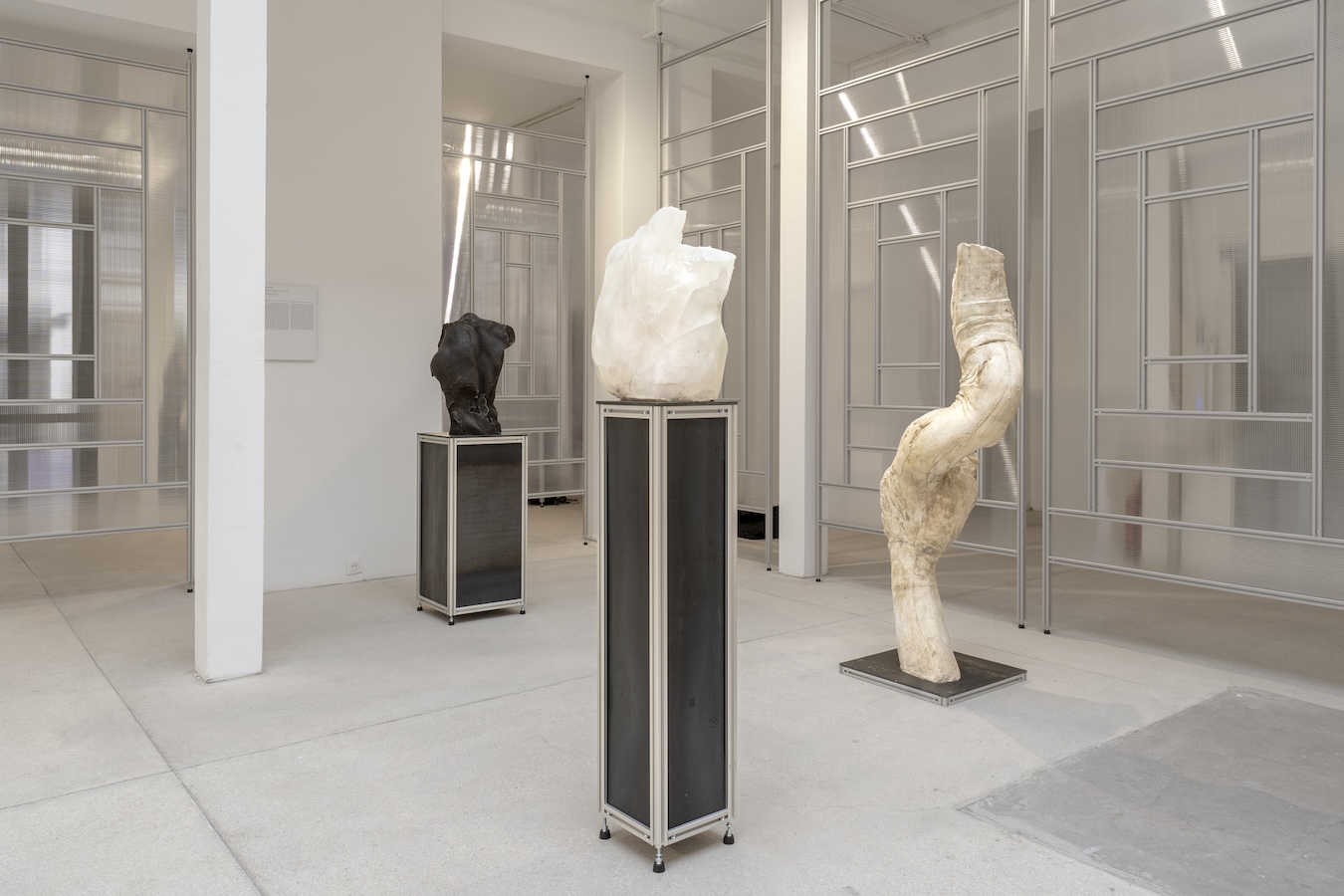 Installation view of “Orbis Tertius” Exhibition at Art Basel Paris, courtesy of AlUla’s Artists in Residency Program.
Installation view of “Orbis Tertius” Exhibition at Art Basel Paris, courtesy of AlUla’s Artists in Residency Program.
Sharaan Resorts, the Contemporary Art Museum, and the Museum of the Incense Road Kingdoms Institute on the Horizon
WW: What are the next major milestones for the AlUla project?
PJ: AlUla’s development is moving at an exciting pace, with several major milestones on the horizon. In the coming years, we look forward to opening Sharaan Resorts, designed by architectural icon Jean Nouvel, which will blend cutting-edge architecture with the dramatic desert landscape.
“AlUla’s development is moving at an exciting pace, with several major milestones on the horizon,”
Phillip Jones
Another major milestone is the opening of two museums —the Contemporary Art Museum and Museum of the Incense Road Kingdoms Institute, which will help solidify AlUla as a hub for knowledge and cultural exchange.
These milestones reflect our commitment to positioning AlUla as a global cultural and tourist destination, where visitors can engage with the arts, explore ancient heritage, and experience sustainable luxury—all within the stunning natural setting of AlUla’s landscapes.






